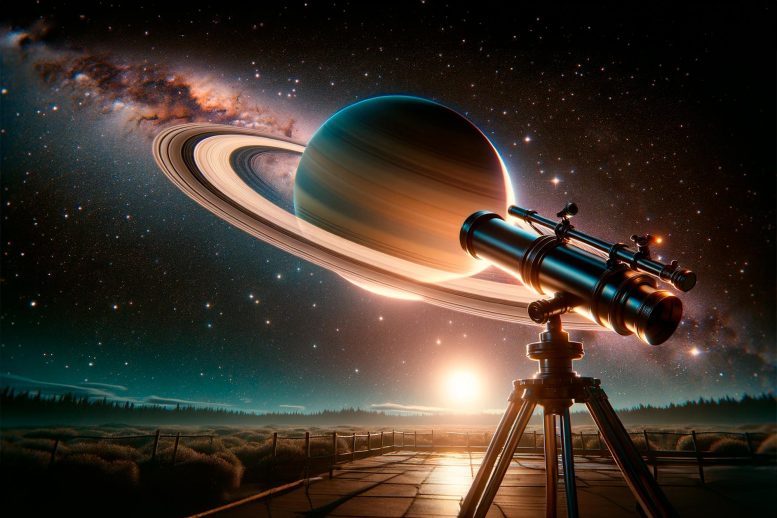
Saturn is currently visible in the evening sky, making it an excellent time to view its rings through telescopes. Recent misinformation suggests these rings are disappearing by 2025, but this is a misinterpretation.
Saturn’s rings, now visible, will seem to disappear in 2025 due to a regular astronomical phenomenon but will reappear thereafter. The current period is ideal for viewing the rings before their next prominent visibility in 2027 or 2028.
If you can get your hands on a telescope, there are few sights more spectacular than the magnificent ringed planet – Saturn.
Currently, Saturn is clearly visible in the evening sky, at its highest just after sunset. It’s the ideal time to use a telescope or binoculars to get a good view of the Solar System’s sixth planet and its famous rings.
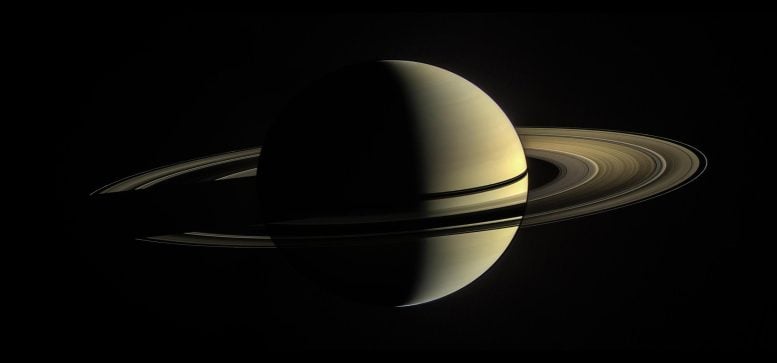
This was Cassini’s view from orbit around Saturn on January 2, 2010. Credit: ASA/JPL-Caltech/Space Science Institute Credit: ASA/JPL-Caltech/Space Science Institute
Misinformation on Social Media
Recently, numerous articles have run like wildfire through social media. Saturn’s rings, those articles claim, are rapidly disappearing – and will be gone by 2025!
So what’s the story? Could the next couple of months, before Saturn drops out of view in the evening sky, really be our last chance to see its mighty rings?
The short answer is no. While it’s true the rings will become almost invisible from Earth in 2025, this is neither a surprise nor reason to panic. The rings will “reappear” soon thereafter. Here’s why.
Tipping and Tilting Earth
To understand why our view of Saturn changes, let’s begin by considering Earth on its constant journey around the Sun. That journey takes us through the seasons – from winter to spring, summer and autumn, then back again.
What causes the seasons? Put simply, Earth is tilted towards one side, as seen from the Sun. Our equator is tilted by about 23.5 degrees from the plane of our orbit.
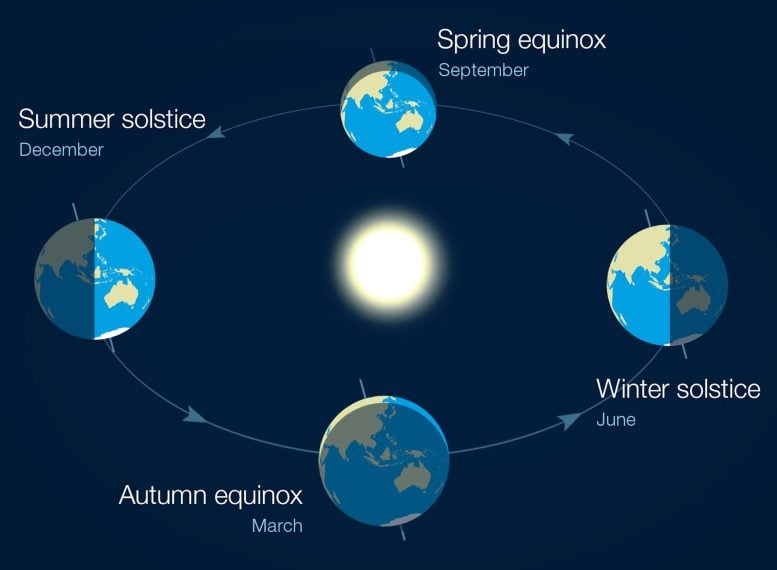
Earth has seasons because its axis is tilted. The axis always points in the same direction as our planet orbits the Sun. Credit: Australian Bureau of Meteorology
The result? As we move around the Sun, we alternately tip one hemisphere and then the other towards our star. When your home hemisphere is tilted more towards the Sun, you get longer days than nights and experience spring and summer. When you’re tilted away, you get shorter days and longer nights, and experience autumn and winter.
From the Sun’s viewpoint, Earth appears to “nod” up and down, alternately showing off its hemispheres as it moves around our star. Now, let’s move on to Saturn.
Saturn, a Giant Tilted World
Just like Earth, Saturn experiences seasons, but more than 29 times longer than ours. Where Earth’s equator is tilted by 23.5 degrees, Saturn’s equator has a 26.7 degree tilt. The result? As Saturn moves through its 29.4-year orbit around our star, it also appears to nod up and down as seen from both Earth and the Sun.
What about Saturn’s rings? The planet’s enormous ring system, comprised of bits of ice, dust, and rocks, spreads out over a huge distance – just over 280,000km from the planet. But it’s very thin – in most places, just tens of meters thick. The rings orbit directly above Saturn’s equator and so they too are tilted to the plane of Saturn’s orbit.
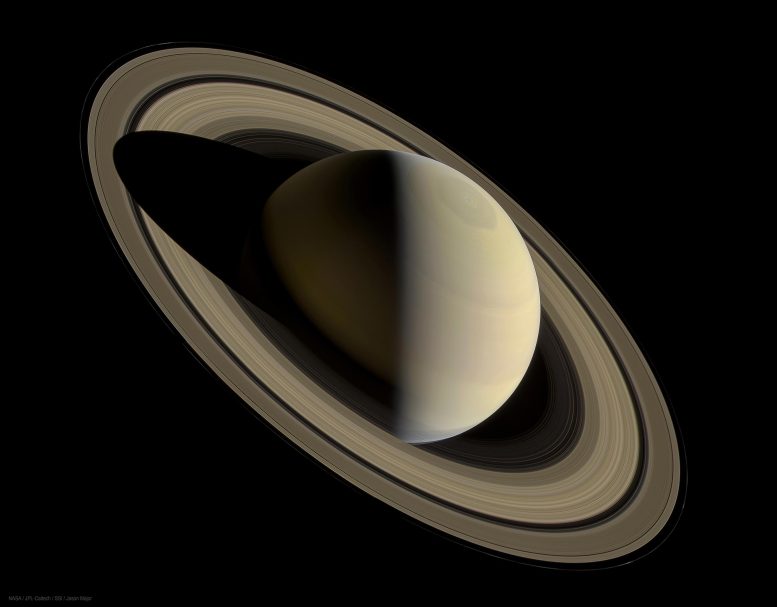
A mosaic of images from NASA’s Cassini mission taken in 2016, highlighting Saturn’s axial tilt during its northern hemisphere summer. Credit: NASA/JPL-Caltech/SSI. Composite by Jason Major via Flickr, CC BY-NC-SA
So Why Do Saturn’s Rings ‘Disappear’?
The rings are so thin that, seen from a distance, they appear to vanish when edge on. You can visualize this easily by grabbing a sheet of paper, and rotating it until it is edge on – the paper almost vanishes from view.
As Saturn moves around the Sun, our viewpoint changes. For half of the orbit, its northern hemisphere is tilted towards us and the northern face of the planet’s rings is tipped our way.
When Saturn is on the other side of the Sun, its southern hemisphere is pointed our way. For the same reason, we see the southern face of the planet’s rings tilted our way.
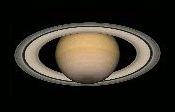
This simulation demonstrates the 29.5-year orbital period of Saturn, as viewed from Earth. The ring system lies directly above Saturn’s equator, so both sides of its disk are visible from Earth during the course of one Saturnian year. Credit: Tdadamemd/Wikimedia Commons, CC BY-SA
The best way to illustrate this is to get your sheet of paper, and hold it horizontally – parallel to the ground – at eye level. Now, move the paper down towards the ground a few inches. What do you see? The upper side of the paper comes into view. Move the paper back up, through your eye line, to hold it above you and you can see the underside of the paper. But as it passes through eye level, the paper will all but disappear.
That’s what we see with Saturn’s rings. As the seasons on Saturn progress, we go from having the southern side of the rings tilted our way to seeing the northern side. Then, the planet tips back, revealing the southern side once more.
Twice per Saturnian year, we see the rings edge on and they all but vanish from view.
That’s what’s happening in 2025 – the reason Saturn’s rings will seemingly “disappear” is because we will be looking at them edge-on.
This happens regularly. The last time was in 2009 and the rings gradually became visible again, over the course of a few months. The rings will be edge on once again in March 2025. Then they’ll gradually come back into view as seen through large telescopes, before sliding out of view again in November 2025.
Thereafter, the rings will gradually get more and more obvious, reappearing first to the largest telescopes over the months that follow. Nothing to worry about.
If you want to clearly see Saturn’s rings, now is your best chance, at least until 2027 or 2028!
Written by Jonti Horner, Professor (Astrophysics), University of Southern Queensland.
Adapted from an article originally published in The Conversation.![]()


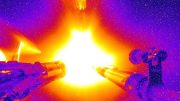
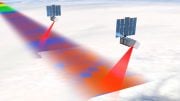
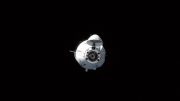


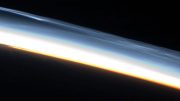

Why is it that despite all the advances in astronomy, the big bang theory still comes up on satellites and TV shows?I don’t want to say that this theory is stupid, because it sounds like old religious and religious superstitions in the Bible.It is stated in the Bible that God created the sun.It is childish now, but a few thousand years ago, the most basic telescopes had not yet been built, and this was how the human mentality was at that time.He thought the same.Now, after fifty years of experience and study in astronomy and geology, I have come to the conclusion about the Big Bang that the theory is wrong, that all the stars that cooled and their fuel and hydrogen inside them turned into black holes..Run out and all the galaxies become a supermassive black hole in the sphere called a black spot, which becomes very dense and compressed, explodes again, and the universe and stars are reborn.I say this when a star runs out of fuel and hydrogen in its core.How can stars be reborn from a supermassive black hole that has no hydrogen? thank you dr mehrdad iran and in usa god by
“I have come to the conclusion about the Big Bang that the theory is wrong….”
Therefor we must all disbelieve it?